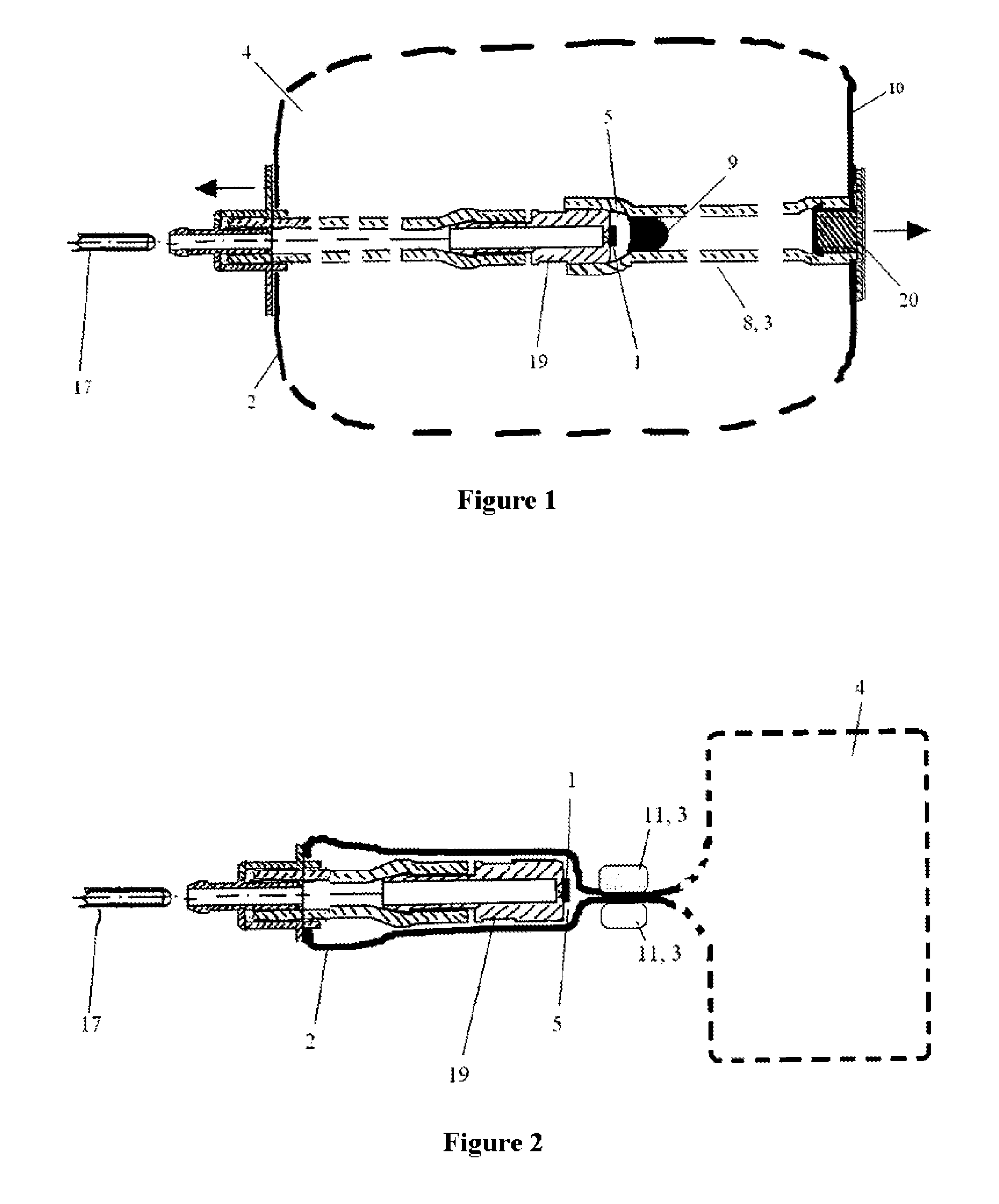Sensor device, comprising an optical sensor, a container and a compartmentalization means
a sensor and optical sensor technology, applied in the field of sensor devices, can solve the problems of hydrophilic optical sensor damage, dose-dependent, radiation damage to optical sensor, etc., and achieve the effect of reducing the internal volume of the tube, minimizing the number of reactive particles forming, and easy penetration
- Summary
- Abstract
- Description
- Claims
- Application Information
AI Technical Summary
Benefits of technology
Problems solved by technology
Method used
Image
Examples
example
[0043]A plastic container (Cultibag RM, Sartorius Stedim Biotech GmbH, Göttingen / volume: 10 l) is equipped with four pH sensors (HP8, Presens GmbH, Regensburg) on polycarbonate caps. Two of the polycarbonate caps with the sensor chemicals are covered by a simple protective cap that can be sealed in an airtight fashion; in two further sensor caps, the protective cap is additionally filled with twenty percent L-ascorbic acid solution. The sensors are attached to the wall of the container, with the sensor chemicals facing the center of the container. The device is subsequently filled with 10 l air and tightly sealed. Thereupon there is gamma irradiation at 56.0 kGy (Co60 source, Beta-Gamma-Service GmbH & Co. K G, Wiehl). After the irradiation, the sensors are taken from the containers and measured with a transmitter (pH-1 mini, Presens GmbH, Regensburg) in buffers with pH values between 5.7 and 8.5. The sensitivity and hence the quality of the sensors corresponds to the difference in t...
PUM
 Login to View More
Login to View More Abstract
Description
Claims
Application Information
 Login to View More
Login to View More - R&D
- Intellectual Property
- Life Sciences
- Materials
- Tech Scout
- Unparalleled Data Quality
- Higher Quality Content
- 60% Fewer Hallucinations
Browse by: Latest US Patents, China's latest patents, Technical Efficacy Thesaurus, Application Domain, Technology Topic, Popular Technical Reports.
© 2025 PatSnap. All rights reserved.Legal|Privacy policy|Modern Slavery Act Transparency Statement|Sitemap|About US| Contact US: help@patsnap.com



